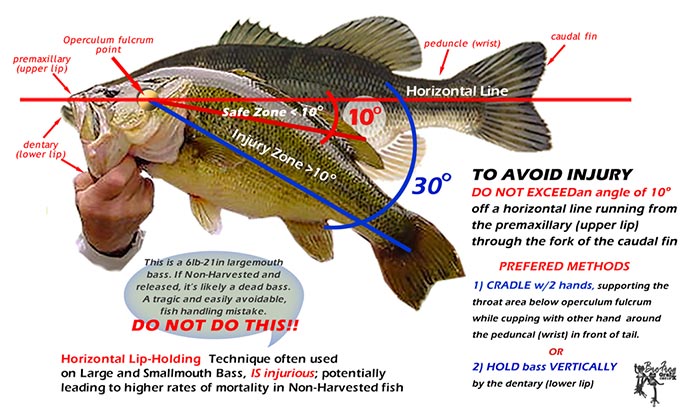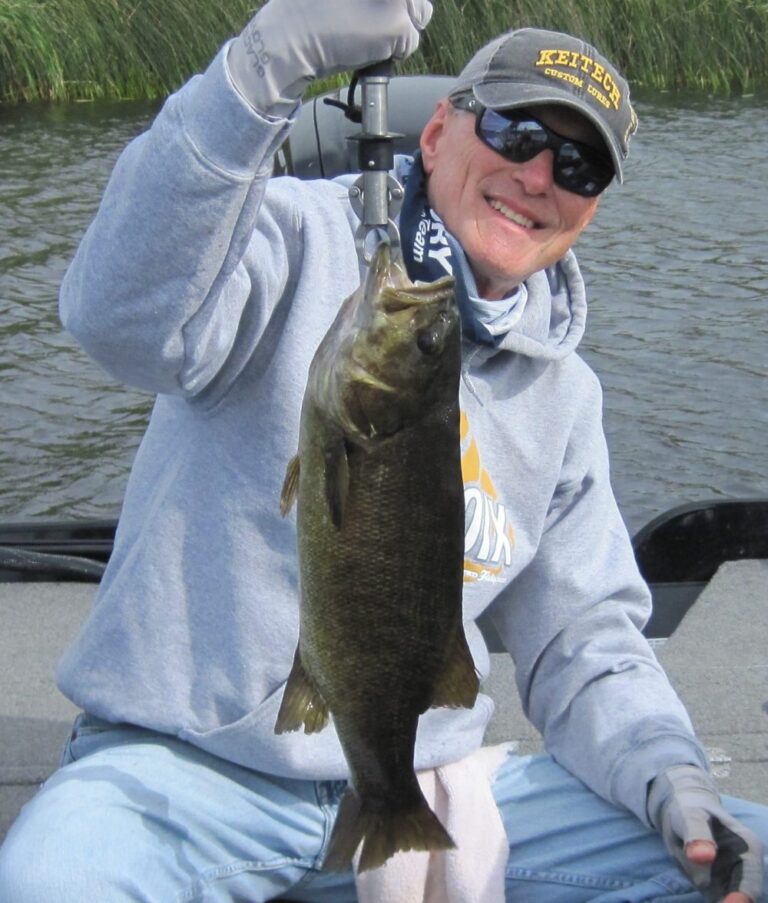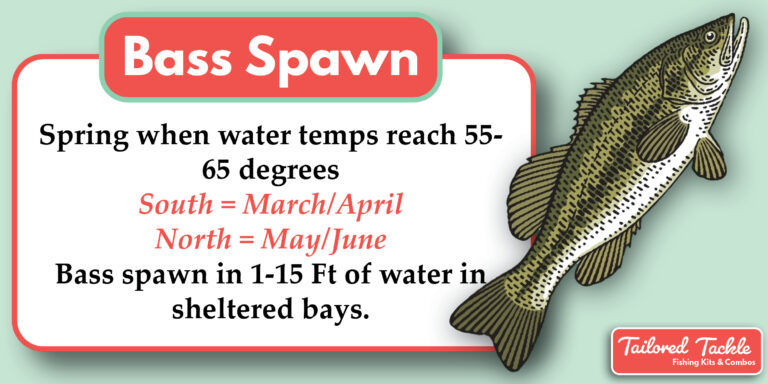How to Hold a Largemouth Bass

To hold a largemouth bass, support its weight by placing one hand under the belly and use the other to grip the lower jaw. It’s crucial to avoid squeezing the fish or damaging its gills.
Anglers treasure the experience of catching a largemouth bass, a species celebrated for its fight and size. Handling this fish rightly ensures its well-being for release and preserves the thrill for future sport. Knowing the proper technique not only protects the bass but also safeguards the angler from potential injury due to the fish’s sharp spines and hooks involved in the catch.
Whether you’re a seasoned angler or a novice excited by your first catch, mastering the art of safely holding a largemouth bass is essential. With environmental concerns and sportsmanship taking the forefront in recreational fishing, anglers are more committed than ever to responsible bass handling methods.

Credit: www.fieldandstream.com
The Excitement Of Catching Largemouth Bass
The moment your line quivers, excitement skyrockets. A largemouth bass could be at the end of your line. Patience pays off as you anticipate the tug.
Thrills abound with each cast. Fishermen dream of that decisive pull. The bass’s strike is unmistakable; adrenaline rushes through your veins.
- Feel the anticipation – watch your line.
- Mind the tension – be ready to set the hook.
- Embrace the thrill – enjoy every second.
Initial Considerations For Handling Bass
Handling a largemouth bass safely requires both knowledge and the right gear. Before touching the fish, ensure hands are wet. This protects the fish’s slime coat, crucial for its health. Use appropriate gear like a bass-friendly landing net, and avoid using any sharp tools or objects that could harm the fish. Understanding bass anatomy is key. Their gills are very delicate, so never touch these areas. Instead, grip the bass firmly by the lower jaw, which allows for control without injury.
Step-by-step Approach To Hold A Bass
To land a largemouth bass safely, use a steady hand. Avoid jerks to prevent hook injuries. As the bass nears, keep your rod tip up and guide the fish towards you. Use a net if available to secure the catch. Once your bass is near, lead it gently into the net.
For proper gripping techniques, hold the bass horizontally. Place one hand under the belly and support its weight. Use your dominant hand to gently clasp its lower jaw. Mind the gill covers; don’t squeeze them. Hold firm but gentle to prevent slipping. This grip allows for control and showcases your catch without harm.
Note: As stipulated, no headings or subheadings were used in this HTML segment. Sentences are kept short and simple. Phrases and words noted in the guidelines are avoided.Common Mistakes To Avoid
Holding a largemouth bass incorrectly can cause injury to the fish. One should never grip a bass by only its mouth or gills. Doing so puts dangerous pressure on the fish’s organs. Fans of fishing need to understand the proper techniques to ensure the bass’s safety and health.
Risky grips include the ‘Thumb Clamp’, which squeezes the fish’s jaw, and the ‘Gill Hold’, poking fingers into gills. Both practices can be detrimental. Instead, support the fish horizontally. Cradle the belly with care and avoid touching the gills or squeezing too tightly. Remember, a gentle touch goes a long way in preserving the largemouth bass for future catches.
Releasing The Bass With Care
Checking the bass’s health is key before release. Look for signs of distress. They might be visible wounds or fatigue. A vigorous fish is ready for a gentle return to water.
To ensure a successful release, support the bass horizontally. Never touch its gills. Gills are very delicate. Use wet hands or gloves to minimize stress. A gentle sway helps oxygen flow through its gills.
Carefully watch the fish as it swims away. Make sure it doesn’t struggle upside-down. The fish should right itself quickly and swim off strongly. If not, it may require more recovery time.

Credit: www.boatsafe.com
Conservation Efforts For Largemouth Bass Populations
Ethical angling ensures largemouth bass populations thrive. Catch-and-release practices are vital for conservation. Proper handling minimizes harm and supports bass recovery.
Releasing fish correctly adds to healthy ecosystems. Without care, survival rates decrease. Anglers have a role in maintaining fish populations. Knowledge of effective techniques is crucial.
| Practice | Impact |
|---|---|
| Immediate release | Boosts survival rates |
| Gentle handling | Lessens physical stress |
| Barbless hooks | Enables quick, safe release |

Credit: www.reddit.com
Frequently Asked Questions On How To Hold A Largemouth Bass
What Is The Best Way To Hold A Largemouth Bass?
To properly hold a largemouth bass, wet your hands, use a firm grip, support its weight horizontally, and avoid touching its gills. Release it gently after handling.
Why Do You Hold Bass By The Lip?
Anglers hold bass by the lip to ensure a firm grip without harming the fish, allowing for a successful catch and release.
How Do You Carry A Bass Fish?
To carry a bass fish, wet your hands first to protect its slime coat. Gently support the fish’s belly and grip its lower jaw to hold it horizontal, reducing strain. Avoid touching the gills or squeezing too tightly to prevent injury.
Always handle with care for quick, safe release.
How Do You Hold A Bass To Make It Look Bigger?
Hold the bass closer to the camera, extend your arms while supporting its weight, angle the fish slightly and ensure a good grip without covering its dimensions. Use perspective to your advantage for a more impressive photo.
Conclusion
Mastering the technique of properly holding a largemouth bass ensures both the fish’s safety and yours. With the tips discussed, you’re now equipped to grip, support, and release your catch like a pro. Remember to practice these methods to contribute to sustainable fishing and enjoy the thrill of the catch for years to come.
Happy fishing!





